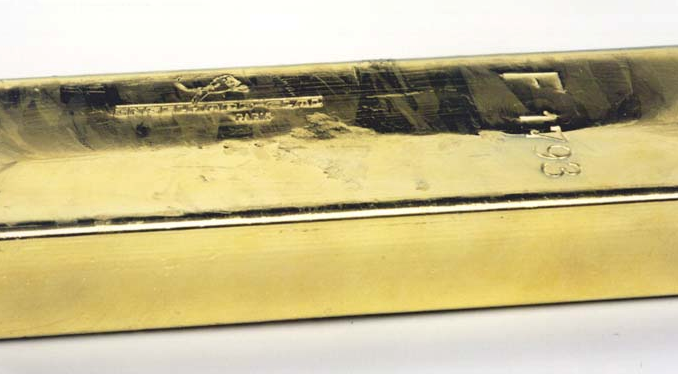
In Les Echos
Why have geopolitics, Wall Street inflation, Chinese debt, sovereign risk, speculation not yet been favourable to gold?
Since April 2018 gold prices have been under pressure, and since June attacked by short sales, the most important since 2015. However, at $1,200 oz they resist, they remain nominally historical and nadirs are increasing: the lowest in December 2015, was followed by a higher nadir in 2016 and then in 2018. In September 2018 they are at parity with May 2010.
The majority of gold investors believe that if the dollar strengthens, the yellow metal falls, and vice versa. This is not always true. On many occasions, gold and the dollar have strengthened simultaneously and a more experienced guide will be to evaluate gold movements inversely to real interest rates (TIR). Linked to the decisions of the FED, the US TIR is the leading horse. However, its effect on gold will be increasingly nuanced by those of other currencies, such as the Yuan or the Indian Rupee. Rate hikes linked to the restrictive phase of central banks are already anticipated in gold prices. But its implementation in an unexpected, disrupted and unpredictable environment will be favorable to gold.
Indeed, the recent growth has only one investment, assets in dollars. This is why gold sales (ETFs and short sales) have become dollar positions transformed into “Tech”. This accumulation caused inflation in the price of the refuge, FAANG prices; and stock market indices with a dose of Tech posted better returns than those dominated by traditional industry. This wide gap between Wall Street and the rest of the world reflected the old theory of bubbles: swollen with hopes they lead us from gold to Apple, but puffed up with fears if Wall Street overturns, from Apple to gold.
The hope of growth or the fear of crisis. Why this consubstantial bipolarism at gold prices is not yet hostage to geopolitical tensions: Korea, Russia, Middle East, Nafta, WTO, Sanctions, trade war initiated by Washington against China, Europe, Canada, steel, aluminum; and the Italian risk… ?
Let us fear the fear that is stirred up without demonstration. For the time being, expectations of this trade war are benefiting the dollar. Tomorrow, will the real effects be the threat of an inflationary contagion towards US growth, Wall Street and the emerging economies? In the end, if the geopolitical isolationist linked to customs tariffs destroys 500,000 jobs in the United States, and more in China, let us not doubt the decline of Wall Street and Shanghai. The upward effect will be immediate on gold prices, and will be supported by purchases from central banks (especially new small emerging countries), ETFs, futures markets and Asian consumers via jewellery hoarding.
The crisis or growth, the same background discovers the setting of Chinese theatre. Gold prices are less turbulent in Yuan, they certainly express exchange rate control, but not yet the anticipation of the dangers of a local finance dominated by the size of the debt. Is it the calm before a fright on the scale of the country’s commitments? At this little game, of fear and for the reasons we know, the gold curve in Turkish lira is only a appetizer, let us wait for the resistance dish of the Chinese debt, “to the bellows”.
Where are we going now?
– What would be the “euro impact” on gold of an Italian sovereign crisis? Like the drying up of bitcoin, which brought liquidity back to the markets, can trade war be favorable to gold by derailing the US machine and moving Wall Street backwards, slipping Chinese debt management and causing an emerging market crisis, or even linking the four crises at the same time? Restoring growth, restricting credit, managing inflation and repairing a state all at the same time, no, it’s not serious!
– Seasonal gold fundamentals are favorable pending the volumes consumed during the two annual events: the Indian wedding season and the Chinese New Year. On the minor side, if gold prices fell to $900-$1,000/t.oz, they would crush the production costs of the least profitable mines, and cause ruptures that would be favourable to the most efficient. In addition, resource nationalism and environmental cost will limit future mining supply. Moreover, Zijin Mining, in association with Barrick or buying the explorers, clarifies the reading of expectations in this field.
– Finally, perhaps one day the natural resource exporting countries affected by the economic war will demand payment for aluminium, gas, oil or cobalt in gold or even crypto gold. Why? Because gold is not the currency of any country, is no one’s debt, and suffers no economic, legal or geopolitical sanctions. In this case, would the creation of such a cryptomonnaie-gold this time have the pretense of solving a problem and finding a utility?
In conclusion, Wall Street inflation, short selling, geopolitical threat, Chinese debt, sovereign risk and the current resistance of gold prices are promising realities for gold. Those that precede quick and necessary coverage, which is not yet the definition of a panic. If gold prices rise, to a solid level of $1,400-1,500/t.oz, since there is no serious “gold metal” SICAV outside the ETFs, it will be preferable to favor mines, which alfa seems much higher.
Published in Les Echos on 09 09 2018